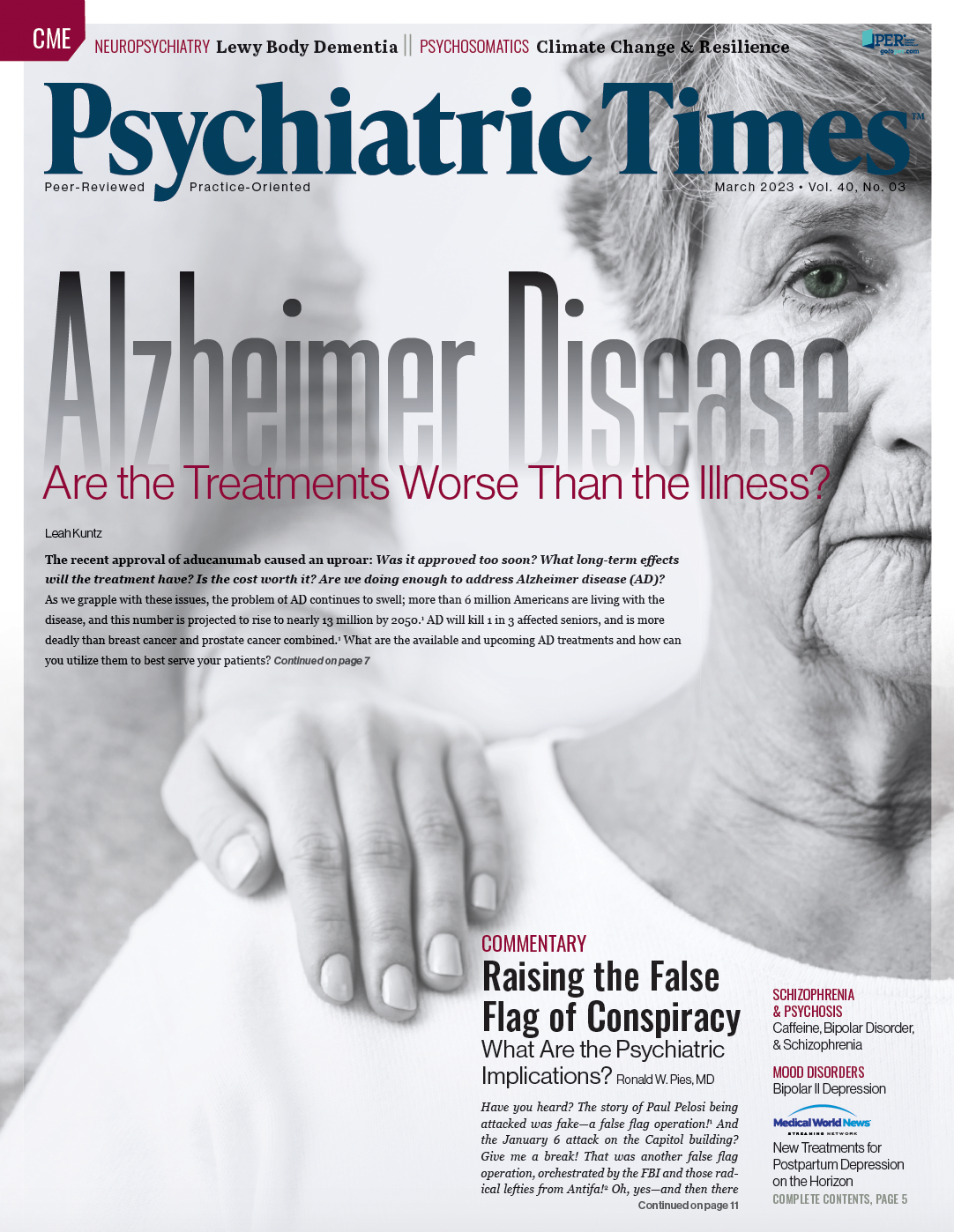Publication
Article
Psychiatric Times
The Many Facets of Hope
Author(s):
“Clinicians must explain the problem and the treatment in a way that is jargon-free, engages the patient (and) instills hope.”
sanderstock_AdobeStock

the birds starting up their evening songs.”
As physicians, we think of hope as a quality so intrinsic to our work with patients that our optimism is seamlessly built into each clinical encounter, perhaps with some degree of caution. For instance, when switching a medication, we might say to the patient, “Let’s see how you do on this,” rather than, “I have high expectation for this new medication to heal you.”
From the onset of training throughout the course of practice, physicians are trained not to make guarantees, both for self-protection and for encouragement of a realistic bar on the patient’s part. Our calling, after all, is to do no harm, to artfully manage a certain degree of uncertainty.
Allen Frances, MD, chair of the DSM-IV task force and chairman emeritus of the Duke University School of Medicine Department of Psychiatry and Behavioral Sciences, says it best: “Clinicians must explain the problem and the treatment in a way that is jargon-free, engages the patient (and) instills hope…”2
It has become noticeable that the topic of hope, especially amid the current climate, is treated with appropriate reverence, but is often shelved in the service of time-sensitive discussions on the business of running a practice, such as ever-changing regulations, electronic medical record and technology upgrades, and coding and collection issues, all while trying to preserve one’s professional autonomy—a tall order, as you will see in this Special Report.
According to an online search, hope is characterized as something ethereal and elusive of concrete measurement, seen as a shortcoming when tangible proof is required.3
For Joyce Knestrick, PhD, an advanced practice nurse, hopefulness is essential to disease prevention and clinical care across a variety of settings. She explains that “April is one of my favorite months… hope of a brighter future as summer is right around the corner.”4
An interventional National Institutes of Health–affiliated study of patients in chronic renal failure, results yet to be published, utilizes the Continuous Hope Scale as part of the research intervention.5
When I was a trainee, my residency group and I were instructed to encourage each psychotherapy patient to leave their session feeling understood yet engaged in the process of self-inquiry. Looking back now, I can recognize why there was something incomplete—my evolving belief that patients should certainly leave their visits feeling self-aware, but also lighter and more empowered, even if that meant a little reassurance from their doctor now and then.
Instilling hope often starts right outside the office building. I recall an advertised consulting space that was positively motivational. The building felt personal yet professional, as did the rest of the street. Maybe it was the mature trees quietly lining each side, the wide sidewalks setting off stately houses at just the right angle, or the pouring in of late afternoon autumnal sunlight.
I imagined that a patient would look forward to their weekly visit. They would be meeting in a workspace that conveyed positive energy, perhaps less tangible than the outward physical characteristics but just as important. As each of our contributors shares their professional insights as well as challenges, they do so as problem solvers with a strong belief in the qualities of hope and hopefulness.
Dr Sofair is a psychiatrist at CarePoint Health in northern New Jersey. Dr Sofair has been a regular contributor to Psychiatric Times™ and is pleased to be part of this Special Report.
References
1. Kingsolver B. Demon Copperhead. Harper; 2022.
2. Frances A. The enduring value of talking therapy. The Carlat Psychiatry Report. October 30, 2022. Accessed February 9, 2023. https://www.thecarlatreport.com/articles/4214-the-enduring-value-of-talking-therapy
3. Enayati A. How hope can help you heal. CNN Health. Updated April 11, 2013. Accessed February 9, 2023. https://www.cnn.com/2013/04/11/health/hope-healing-enayati
4. Knestrick J. Spring into hope. J Nurse Pract. 2018;14(4):A10.
5. The effect of hope-focused motivational interview on depression, anxiety, stress and hope levels of individuals receiving hemodialysis treatment. ClinicalTrials.gov. Updated December 27, 2022. Accessed February 9, 2023. https://clinicaltrials.gov/ct2/show/NCT04927923






